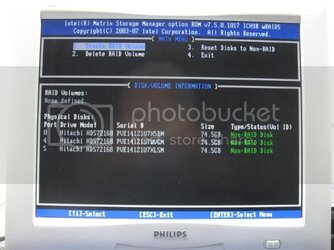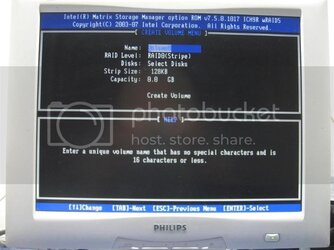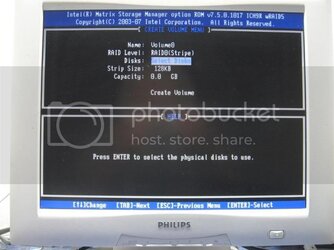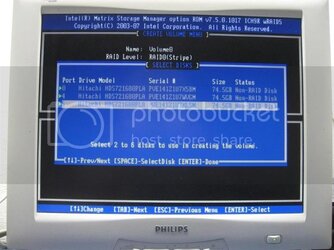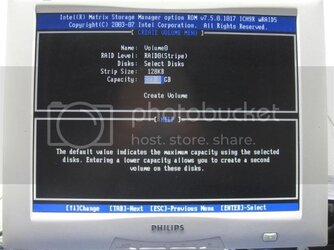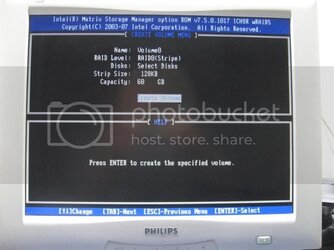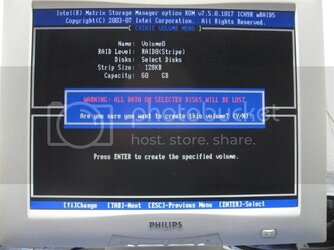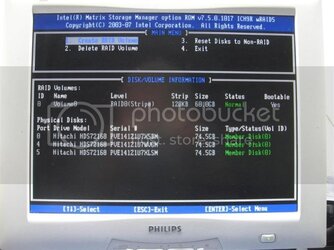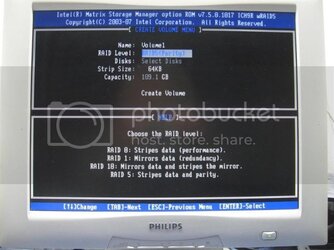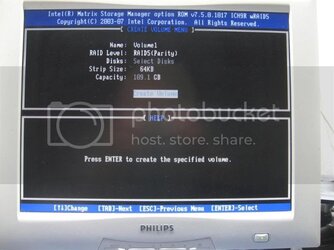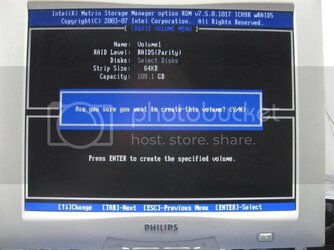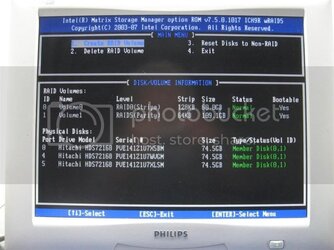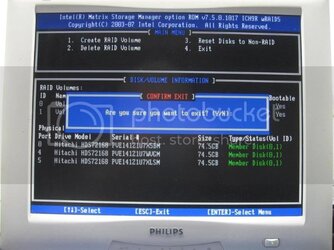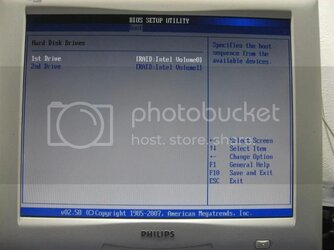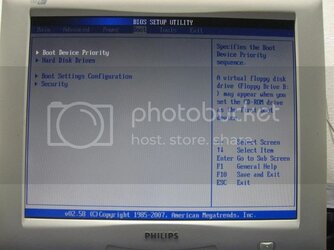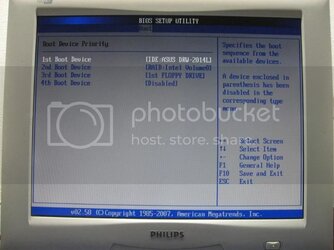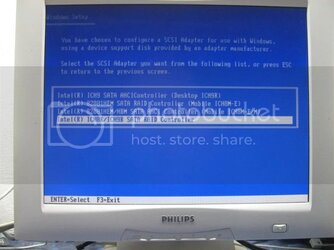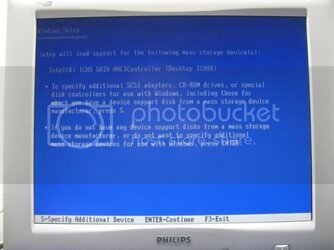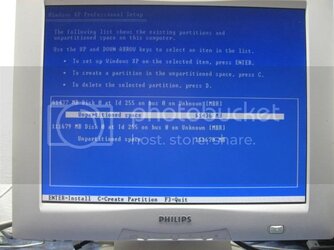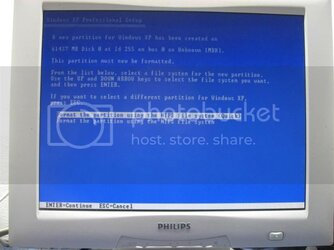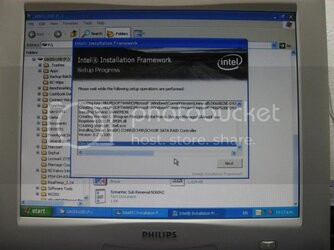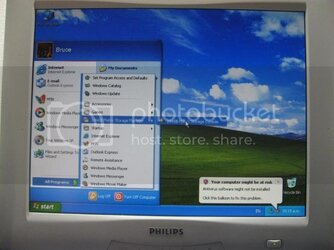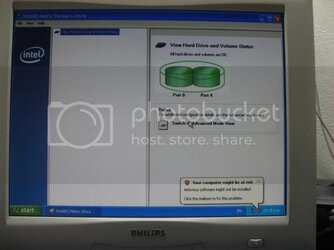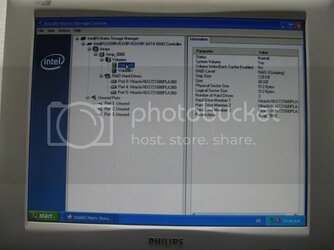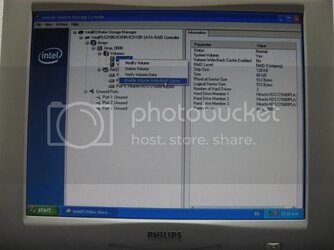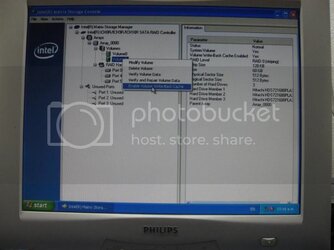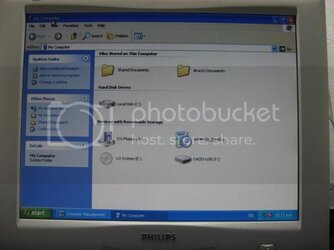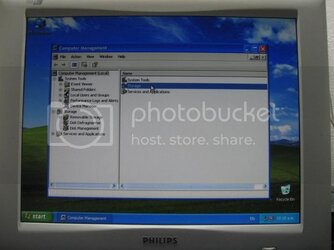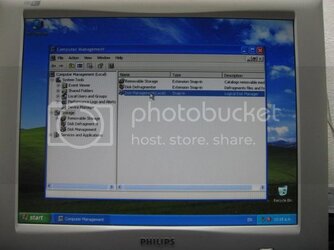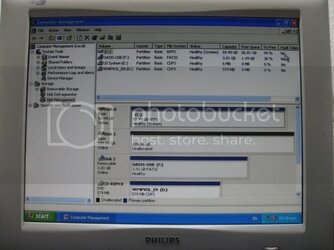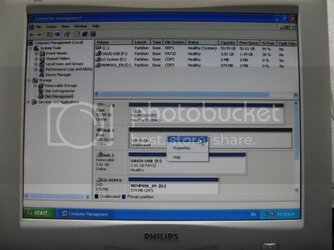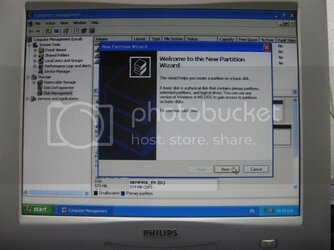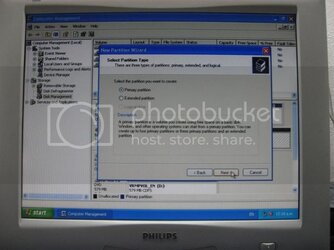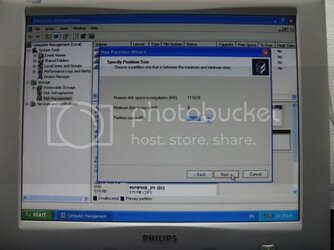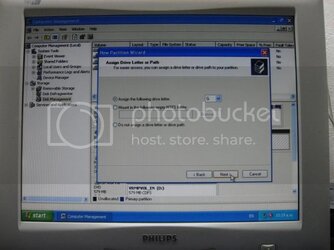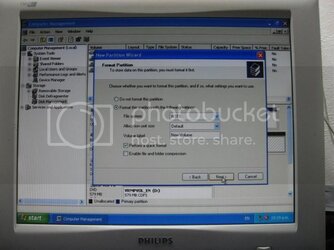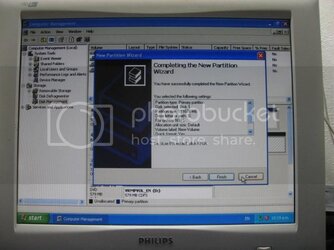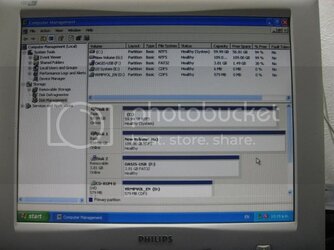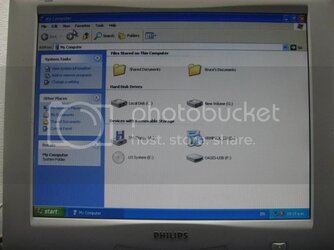- Joined
- Aug 29, 2002
Numerous times in the main 'Matrix' thread, various members have asked for guidance on the various steps involved, or can't see any hard drives to install Windows on, etc.
I figured I would put something simple together, with pictures & screenshots, to take any pain out of the process.
I thought I’d mention this here… this demo is for XP-Pro. With all variants of XP, you need to load drivers during the Windows installation. With Vista, you do not as they are built in, so if you’re setting up a Matrix with Vista as the O/S… no need to hit F6 as the install starts.
Here we go…
1. Make sure your BIOS detects all the hard disks you want to use.

2. Now head into the BIOS. On the Asus P5K that I set this up on, the SATA Configuration is on the 1st page as you see here.

3. The default setting is generally IDE as you see here.

4. Use the arrows to move to SATA Configuration and hit Enter to expose the choices

5. We want to select RAID, so arrow to there and hit Enter. It should end up looking like this.

6. It’s really easy to be fooled into believing that this is all the BIOS work we have to do, but if we check the Hard Drives listing

7. We see that the drives are still listed individually.

8. Now we want to save the changes we’ve made so far, so hit F10

9. When the PC reboots, you will see an additional item pop-up on the way through the boot process… when it appears, be ready to hit Ctrl+I keys together.

10. This is where we actually tell the Intel Matrix Manager what to do with the drives. Using the Enter key and the up/down arrows, we make our selections. First up, we create our first Raid Volume.

I figured I would put something simple together, with pictures & screenshots, to take any pain out of the process.
I thought I’d mention this here… this demo is for XP-Pro. With all variants of XP, you need to load drivers during the Windows installation. With Vista, you do not as they are built in, so if you’re setting up a Matrix with Vista as the O/S… no need to hit F6 as the install starts.
Here we go…
1. Make sure your BIOS detects all the hard disks you want to use.
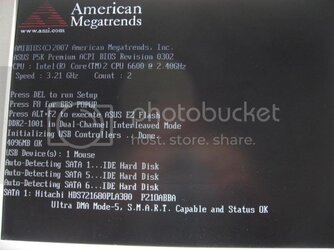
2. Now head into the BIOS. On the Asus P5K that I set this up on, the SATA Configuration is on the 1st page as you see here.
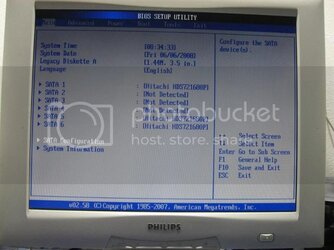
3. The default setting is generally IDE as you see here.
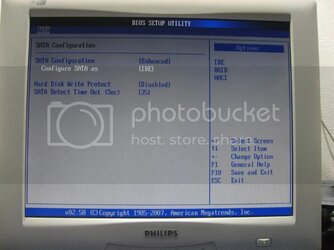
4. Use the arrows to move to SATA Configuration and hit Enter to expose the choices
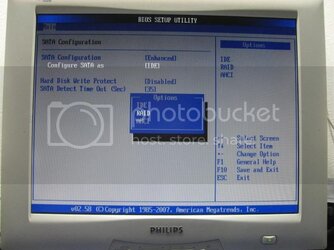
5. We want to select RAID, so arrow to there and hit Enter. It should end up looking like this.
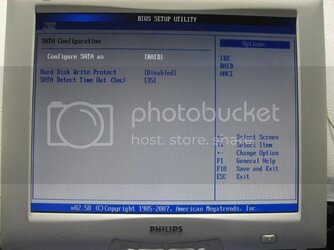
6. It’s really easy to be fooled into believing that this is all the BIOS work we have to do, but if we check the Hard Drives listing
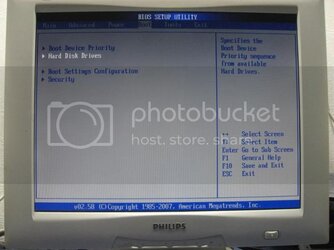
7. We see that the drives are still listed individually.
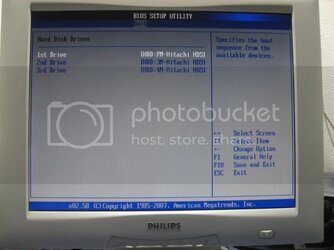
8. Now we want to save the changes we’ve made so far, so hit F10
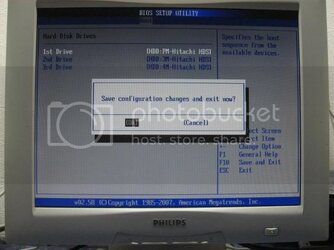
9. When the PC reboots, you will see an additional item pop-up on the way through the boot process… when it appears, be ready to hit Ctrl+I keys together.
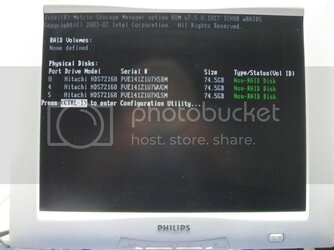
10. This is where we actually tell the Intel Matrix Manager what to do with the drives. Using the Enter key and the up/down arrows, we make our selections. First up, we create our first Raid Volume.
